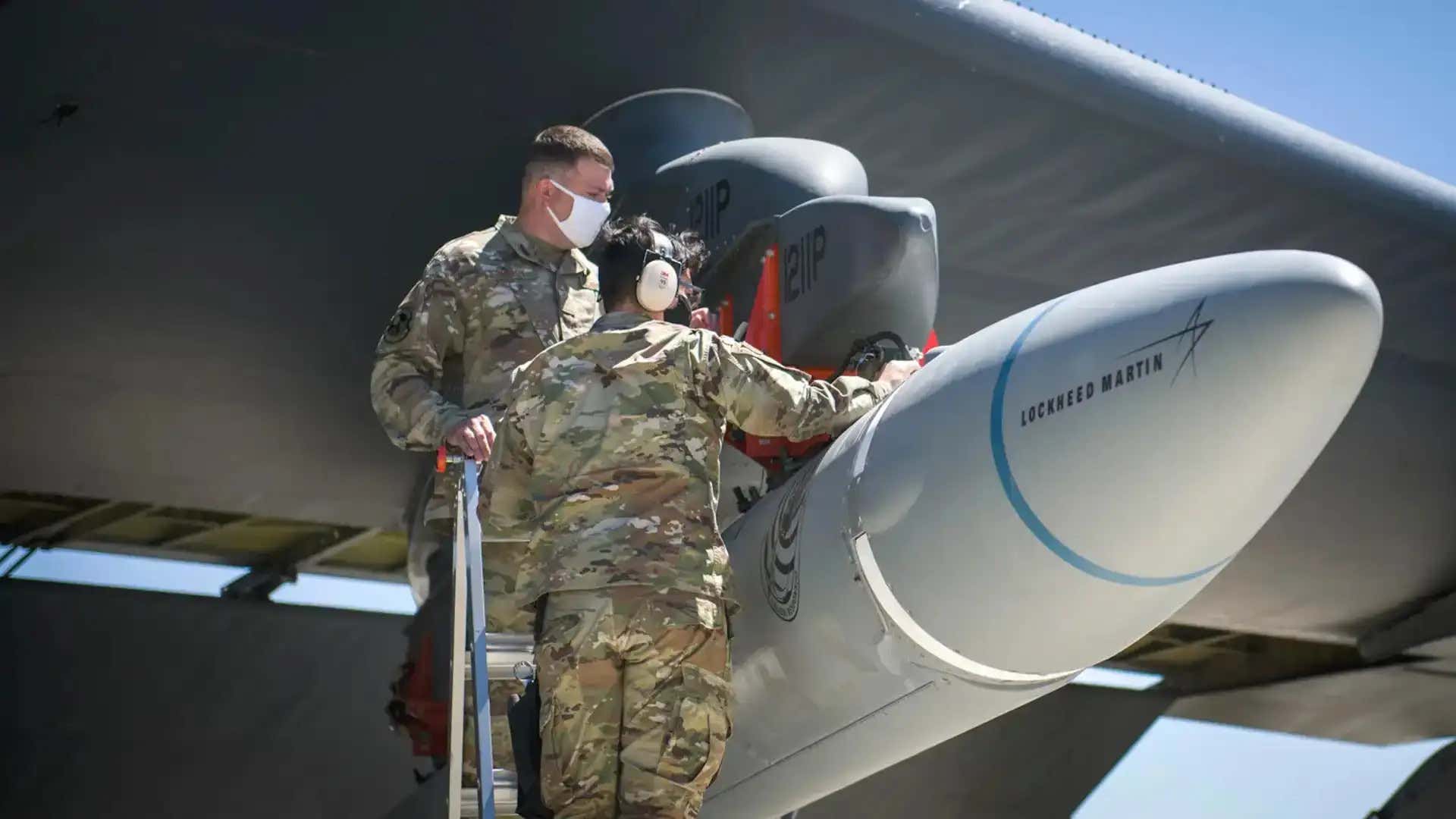The US recently conducted a successful hypersonic missile test in mid-march, but covered it up to prevent escalating tensions with Russia, CNN reported citing a defense official familiar with the matter.
The mid-march test occurred just as President Joe Biden was scheduled to fly to Europe to discuss Russia’s ongoing invasion of Ukraine, however few details about the event have been disclosed now.
The missile, a Hypersonic Air-breathing Weapon Concept (HAWC), was launched from a B-52 bomber and tested off the west coast. The missile flew at heights greater than 65,000 feet for 300 miles, taking around five minutes.
According to a press statement from the Defense Advanced Research Projects Agency (DARPA), the test achieved all key objectives, including missile integration and release, safe separation from the launch aircraft, booster firing, and cruise.
There are few details regarding the flight, including no indication of how quickly the missile flew or how far it traveled. The missile’s speed was only indicated to be greater than Mach 5 in the press release.
The HAWC missile tested by the US had no warhead and instead depends on kinetic energy to annihilate targets. It’s the second time a HAWC missile has been successfully tested. Last September, the US Air Force tested the Raytheon HAWC, which is powered by a Northrop Grumman scramjet engine.

Following the first successful HAWC test, the US experienced a huge setback when a US Air Force AGM-183A air-launched rapid response weapon (ARRW) hypersonic missile failed its third test. China is said to have successfully tested a hypersonic glide vehicle last year, while Russia has successfully tested its Tsirkon hypersonic missile.
The US has revived its focus on hypersonic weapons, stoking fears that the US is falling behind in producing cutting-edge military technologies. Last year, General David Thompson, the US Space Force’s vice-chief of space operations, claimed that the US was “not as advanced” in hypersonic weapons as China or Russia.
He said: ‘We have catching up to do very quickly. The Chinese have had an incredibly aggressive hypersonic program for several years.’
Hypersonic Air-Breathing Weapon Concept (HAWC)
The Hypersonic Air-breathing Weapon Concept (HAWC) program is a joint DARPA and the United States Air Force (USAF) effort that aims to develop and demonstrate crucial technologies that will enable an effective and economical air-launched hypersonic cruise missile.

The program’s goal is to validate critical technologies through efficient, timely, and low-cost flight tests.
The long-range missile is designed to travel at speeds of Mach 5 and higher, allowing for greater precision and faster response times. Raytheon Missiles & Defense and Northrop Grumman collaborated to develop the concept, which also had Lockheed Martin as a rival.
In June 2019, Raytheon and Northrop Grumman announced their collaboration. The businesses were chosen for a $200 million contract to develop a working system for DARPA and the US Air Force under the HAWC program. Raytheon builds the missile, while Northrop Grumman provides the scramjet engines that propel it.

The deal takes advantage of the two businesses’ collective experience to demonstrate readiness to manufacture next-generation tactical missile systems. It enables the companies to continue working together on HAWC and other prospective air-breathing hypersonic missiles in the future.
The HAWC program is looking at advanced air vehicle configurations with efficient hypersonic flight performance. Furthermore, a hydrocarbon-based scramjet-powered engine is expected for improved cruising at hypersonic speeds, according to the project specifications.
The research-based efforts are focused on lowering the missile’s thermal stress during high-temperature flight. The focus is also on cost-effective and scalable system designs and manufacturing methods.
The HAWC vehicle performs best in an oxygen-rich environment, where its speed and maneuverability make detection challenging.
US-Russia Tensions
Throughout the Ukraine crisis, the US has avoided taking actions that could exacerbate tensions with Russia, such as opposing the imposition of a no-fly zone over the country.
The US has also objected to the transfer of fighter aircraft to Ukraine through the US, fearing that the Kremlin would perceive such a move as the US and NATO joining the Ukraine conflict.
The specifics of the latest hypersonic test were kept under wraps for two weeks in order to avoid additional outrage from Russian President Vladimir Putin, whose troops are still bombarding Ukraine.
The United States even halted a test of the Minuteman III intercontinental ballistic missile (ICBM) on Friday. The test had already been postponed in early March to avoid any moves that could be misinterpreted by Russia at such a delicate moment.
The Biden administration has sought $7.2 billion for long-range weapons, including hypersonic missiles, in the FY23 defense budget. The Government Accountability Office highlighted 70 initiatives connected to the development of hypersonic weapons in a report last year, with a cost estimate of approximately $15 billion between 2015 and 2024.
Meanwhile, last month, Russia used its Kinzhal hypersonic missiles in Ukraine for the first time, striking a weapons storage location. The ‘Kinzhal,’ or Dagger, is said to be ‘unstoppable’ by current Western weapons, according to Moscow.

The Russian use of their hypersonic Kinzhal missile was understated by US officials. After the Russians announced the missile launch, Defense Secretary Lloyd Austin stated he did not see it as “some sort of game-changer.”
Days later, Pentagon spokesman John Kirby claimed it was “hard to know what exactly the justification” for the launch, as it was aimed at an immobile storage facility.
The weapon was initially purportedly employed by Russia in 2016 during its military campaign in Syria to help the Assad regime, but it was uncertain whether this was the same variant. During the battle for Aleppo in 2016, some of the most intensive bombings occurred, leading to the deaths of hundreds of civilians.
The missile, which flies at 10 times the speed of sound and can penetrate air defense systems, has been dubbed “an ideal weapon” by Russian President Vladimir Putin.
- Contact the author at ashishmichel@gmail.com
- Follow EurAsian Times on Google News




